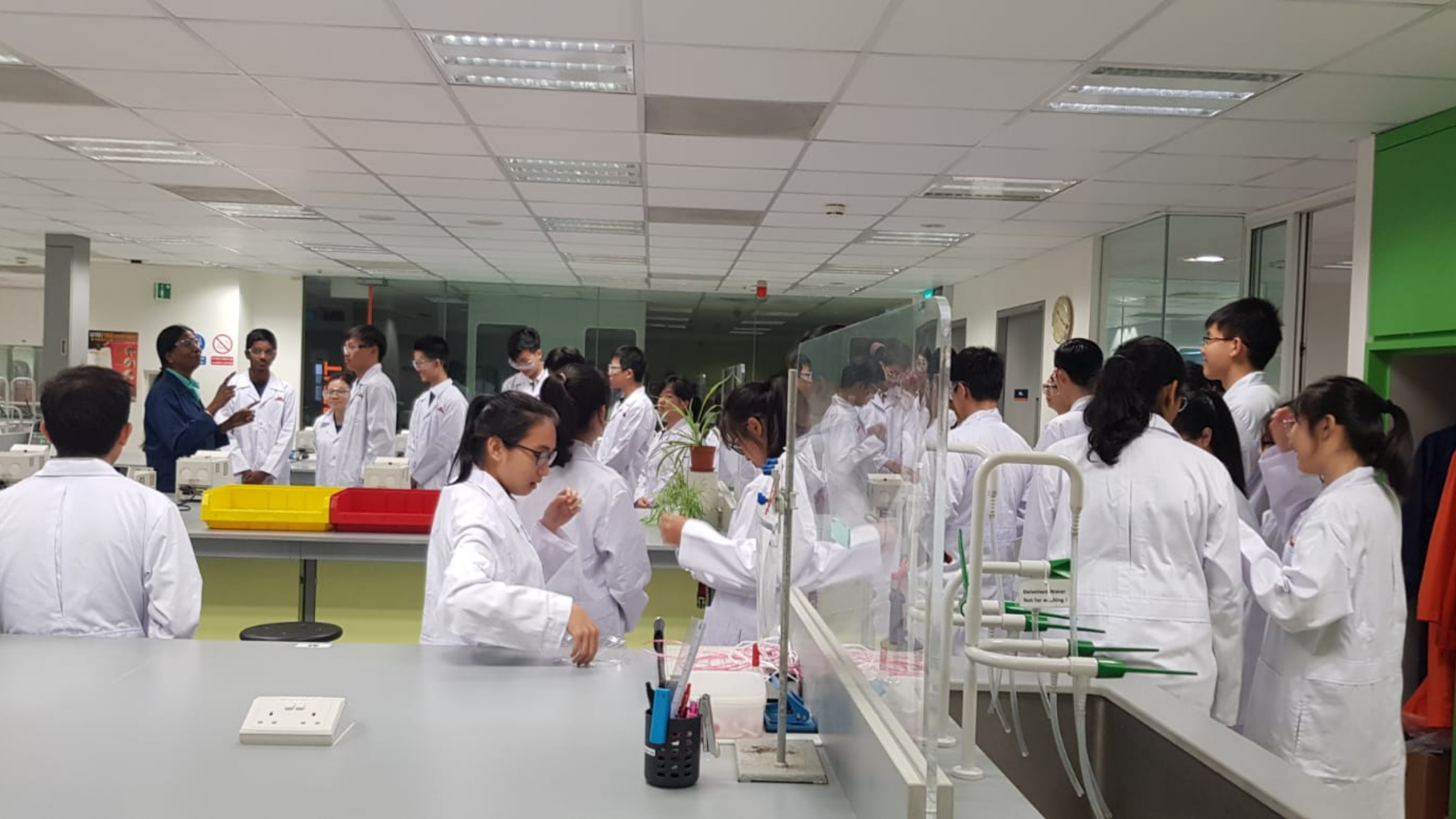This article will provide students with summary notes on the first topic of A Level Biology – The Cell and Biomolecular Life. Find out more about the topics tested for A Level Bio here.
You can also download our A Level Biology Summary notes on this topic here.

Biochemical tests for A Level Biology:
● Benedict’s solution can be used to test for the presence of reducing sugars.
Reducing sugars include all monosaccharides and some disaccharides.
Therefore it can be used to test for glucose, fructose and maltose. It does not test for sucrose, however.
The test involves heating the sugar with Benedict’s solution – if the colour
changes from blue to brick-red then glucose is present.
A chemical test for starch is iodine/potassium iodide. If the solution turns blue/black in colour then starch is present.
There are 4 major types of biomolecules and they are namely
1 – Carbohydrates
2 – Proteins
3 – Nucleic Acid
4 – Lipids
1 – Carbohydrates
Carbohydrates are molecules that consist only of carbon, hydrogen and oxygen and they are long chains of sugar units called saccharides.
There are three types of saccharides – monosaccharides, disaccharides and polysaccharides.
Monosaccharides are single units that can join together to form disaccharides and polysaccharides by glycosidic bonds which are formed in condensation reactions.
Monosaccharides
They are small organic molecules used as building blocks of complex carbohydrates.
They have a varying number of carbon atoms, for instance:
Glyceraldehyde is a triose used in metabolic reactions
Ribose is a pentose sugar which is a component of nucleic acid
Glucose is a monosaccharide containing six carbon atoms in each molecule, it is the main substrate for respiration therefore it is of great importance.
It has two isomers – alpha and beta glucose.
Disaccharides:
Disaccharides are formed in a condensation reaction between two monosaccharides.
Maltose is a disaccharide formed by the condensation of two glucose molecules
Sucrose is a disaccharide formed by the condensation of glucose & fructose
Lactose is a disaccharide formed by condensation of glucose & galactose
Polysaccharides:
Polysaccharides are formed from many monosaccharides joined together by glycosidic bonds and include:
● Glycogen and starch which are both formed by the condensation of alpha glucose
● Cellulose is formed by the condensation of beta glucose
Glycogen is the main energy storage molecule in animals and it’s formed from many molecules of alpha glucose joined together by 1, 4 and 1, 6 glycosidic bonds.
It has a large number of side branches meaning that energy can be released quickly.
Moreover, it is a relatively large but compact molecule thus maximising the amount of energy it can store.
Starch stores energy in plants and it is a mixture of two polysaccharides called amylose and amylopectin:
● Amylose – amylose is an unbranched chain of glucose molecules joined by 1, 4 glycosidic bonds, as a result, that amylose is coiled and thus it is a very compact molecule meaning it can store a lot of energy in a small space.
● Amylopectin is branched and is made up of glucose molecules joined by 1, 4 and 1, 6 glycosidic bonds, due to the presence of many side branches it is rapidly digested by enzymes therefore energy is released quickly.
Cellulose is a component of cells wells in plants and it’s composed of long, unbranched chains of beta glucose which are joined by glycosidic bonds.
Microfibrils are strong threads that are made of long cellulose chains joined together by hydrogen bonds and they provide structural support in plants cells.
2 – Lipids
Lipids are biological molecules that are only soluble in organic solvents such as alcohol.
There are two types of lipids:
● Saturated lipids such as those found in animal fats – saturated lipids don’t contain any carbon-carbon double bonds.
Too much saturated fat can increase the cholesterol levels in the blood thus increasing the risk of coronary heart disease.
● Unsaturated lipids which can be found in plants – unsaturated lipids contain carbon-carbon double bonds and melt at lower temperatures than saturated fats.
Unsaturated fats are healthy as they provide essential fatty acids.
The greater the number of unsaturated bonds, the weaker the intermolecular bonds resulting in a lower melting point, and as a result that saturated fats which don’t contain any double bonds are solid at liquid temperature and unsaturated lipids are liquid at room temperature.
Triglycerides are lipids made of one molecule of glycerol and three fatty acids joined by ester bonds formed in condensation reactions.
There are many different types of fatty acids, they vary in chain length, presence and number of double bonds.
Also, some triglycerides contain a mix of different fatty acids.
Triglycerides are used as energy reserves in plant and animal cells.
In phospholipids, one of the fatty acids of a triglyceride is substituted by a phosphate-containing group.
Phosphate heads are hydrophilic and the tails are hydrophobic and as a result, phospholipids form micelles when they are in contact with water as heads are on the outside as they are attracted to water and tails are on the inside as they move away from water.
3 – Proteins
Amino acids are the monomers from which proteins are made.
Amino acids contain an amino group – NH2, carboxylic acid group and a variable R group which is a carbon-containing chain.
There are 20 different amino acids with different R groups.
Amino acids are joined by peptide bonds formed in condensation reactions.
A dipeptide contains two amino acids and polypeptides contain three or more amino acids.
The structure of proteins is determined by the order and number of amino acids, bonding present and the shape of the protein:
● The primary structure of a protein is the order and number of amino acids in a protein.
● The secondary structure is the shape that the chain of amino acids chains – either alpha helix or beta pleated sheet.
The shape is determined by the type of bonding presents such as hydrogen bonding, ionic bonds and disulphide bridges.
● The tertiary structure of proteins is the 3D shape of the protein, it can be globular or fibrous. Globular proteins such as enzymes are compact whereas fibrous proteins such as keratin are long and thus can be used to form fibres.
● For instance, collagen is a fibrous protein of great strength due to the presence of both hydrogen and covalent bonds in the structure.
Collagen molecules wrap around each other and form fibrils that form strong collagen fibres.
Collagen forms the structure of bones, cartilage and connective tissue and is a main component of tendons that connect muscles to bones.
● Haemoglobin is a water soluble globular protein that consists of two beta polypeptide chains and a haem group. It carries oxygen in the blood as oxygen can bind to the haem (Fe2+) group and oxygen is then released when required.
Peptide bonds can be hydrolysed (broken) with the addition of water in a hydrolysis reaction.
Water
Water is a very important molecule that is a major component of cells, for instance:
It is a polar molecule due to uneven distribution of charge within the molecule – the hydrogen atoms are more positive than the oxygen atom causing one end of the molecule to be more positive than the other.
Is a metabolite in metabolic reactions such as condensation and hydrolysis which are used in forming and breaking chemical bonds.
Water is a solvent in which many metabolic reactions occur.
Has a high specific heat capacity meaning that a lot of energy is required to warm water up. Therefore, minimising temperature fluctuations in living things therefore it acts as a buffer.
It has a relatively large latent heat of vaporisation, meaning evaporation of water provides a cooling effect with little water loss.
There is strong cohesion between molecules that enables effective transport of water in tube-like transport cells as the strong cohesion supports columns of water (capillary action), as a result of strong cohesion the surface tension at the water-air boundary is high.
Download our full A Level Biology Summary notes here!

Tutopiya offers 1-1 online tuition for the A Level Biology curriculum for our junior college students. We have a pool of experienced and well-trained A Level Biology tutors that are readily available. Tutopiya offers all new students a free trial lesson on our platform, so what are you waiting for? Contact us now!
